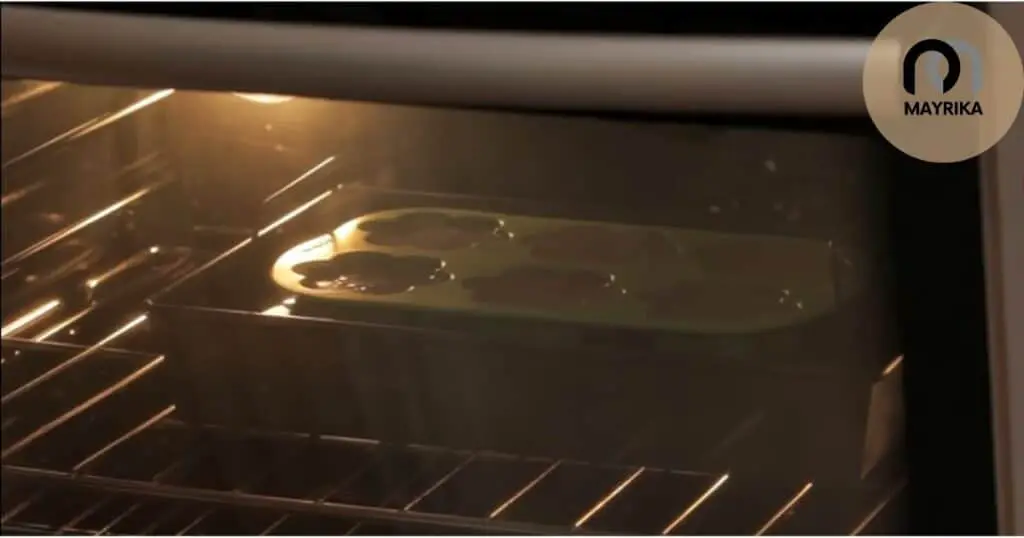From baking cookies to whipping cream, silicone bakeware can be used for all kinds of tasks. Learn to use it well and enjoy the results!
Silicone baking cups, baking pans, and muffin tins are very popular with bakers, especially when you want to bake cookies, brownies, cupcakes, and pies.
When you bake using silicone bakeware, you can be sure that the baked goods will come out of the oven evenly distributed and smooth on the top, without getting stuck on the pan or pan liner.
I wanted to share my experience with silicone baking and how it works.
What is Silicone Baking?
What’s silicone baking? It’s a baking method that uses silicone molds to bake and decorate cakes, cookies, and pies.
A silicone mold is a tool that helps to create a perfectly smooth top and sides of a baked creation.
They can be reused over and over again, and most of all, they’re incredibly easy to clean up after.
The silicone baking method isn’t necessarily new. But its popularity has recently skyrocketed as more people start using silicone baking.
The reasons behind the increase in popularity are twofold.
Is it Safe to Use Silicone Bakeware?
I am often asked by people just starting out in the food and beverage industry whether silicone bakeware is safe to use.
Yes, it is. Silicone bakeware has been around for quite some time. In fact, silicone bakeware has been used for years as oven mitts.
It can be used to cook anything from baked goods to cakes. In fact, most of the items on my kitchen shelves are made of silicone bakeware.
I even use silicone bakeware to cook pasta and rice. So, yes, it is safe to use silicone bakeware.
Why Do I Use Silicone Bakeware?
A lot of people have no clue why they’re baking with silicone bakeware, but for me, it’s because I have sensitive skin and cannot tolerate the taste of traditional aluminum baking dishes.
Plus, the silicones are extremely durable, non-stick, and easy to clean. There are different types of silicone bakeware out there, including disposable pans that don’t even need to be washed.
I’ve been using these silicone bakeware products for years, and I love how easy they are to clean.
And if you’re a baker like me who has to work with toxic chemicals, you owe it to yourself to find a safer alternative.
How To Bake Using Silicone Bakeware

Following are the steps of making a cake using silicone bakeware:
- Put all the ingredients in a mixing bowl and stir with a spatula to mix them well.
- The consistency should be thick enough to hold its shape and not be liquid.
- Pour a small amount of mixture into each mold.
- Put the silicone molds in the oven for 3-5 minutes.
- Remove the molds from the oven and let them cool down completely.
- Once the cake has cooled down, you can start removing it.
- Cut it into pieces and serve it as a dessert.
- If you don’t have a mold, pour the mixture into a baking pan and bake it in an oven for 5-10 minutes or until done.
Should I Use Silicone Baking Mats?
When you bake in the oven, should you use silicone baking mats? Or, should you just stick to using parchment paper? Both have their place.
Silicone baking mats are meant to be a nonstick alternative to regular baking sheets.
They are used by professionals who need to avoid contaminating their equipment by removing stuck-on food.
So, if you’re baking cookies in the oven, it makes sense to use them, and if you bake in a professional kitchen, it’s a smart idea.
How to Care for Silicone Bakeware
A lot of people use nonstick baking pans because of convenience.
But if you’re thinking of investing in new equipment, there are some things you should consider, like cleaning your pans and keeping them in good condition to help your baked goods rise better.
To clean silicone bakeware, wash with soap and warm water or a mild dish detergent.
Then, rinse and dry. Silicone bakeware will last longer if you wipe down the surface with a soft cloth and dry it completely before using it again.
Store them in a cool, dry place. Avoid storing silicone bakeware next to other ovens or microwaves, as extreme heat can cause the surface to break down.
Conclusion
If you don’t bake often, I highly recommend buying a silicone baking pan to make your breads, cakes, and cookies come out more evenly.
Once you get started, you will wonder why you didn’t make your favorite treats this way sooner!
If you already bake, a silicone mat will help prevent your muffins, cupcakes, and brownies from sticking to your pan.
FAQs
-
Do you put silicone bakeware directly on the oven rack?
Bakeware that has been placed directly on the oven rack may experience warping or discoloration over time.
Silicone bakeware should instead be placed on a cookie sheet or oven rack, which helps prevent warping and keeps the bakeware clean.
-
Do silicone baking pans need to be greased?
Silicone baking pans do not need to be greased, but you may want to grease them to prevent sticking.
However, we recommend against using non-stick baking pans since they have no greasing properties.
Silicone pans are ideal for use with conventional ovens and are usually safe to use for most baking recipes.
-
What temperature do you bake a cake in a silicone pan?
You can bake a cake in a silicone pan at up to 450°F. To ensure that your cake turns out perfect, it’s advisable to have a thermometer to monitor the temperature.
-
Can you use paper cupcake liners in silicone pans?
Yes, you can use paper cupcake liners in silicone pans, but you should make sure that they are food-safe, and don’t contain any chemicals that could react with the silicone.
-
How do you get muffins out of silicone cups?
To get muffins out of silicone cups, first put the muffin upside down, and then flip it over. Next, put the muffin on a flat surface, and let it cool.
-
Can silicone bakeware be used in the microwave?
Silicone bakeware can be used in the microwave oven, and even though it may not be recommended by most manufacturers, it can actually work.
However, the baking time will be longer compared to using regular non-siliconized aluminum cookware.
